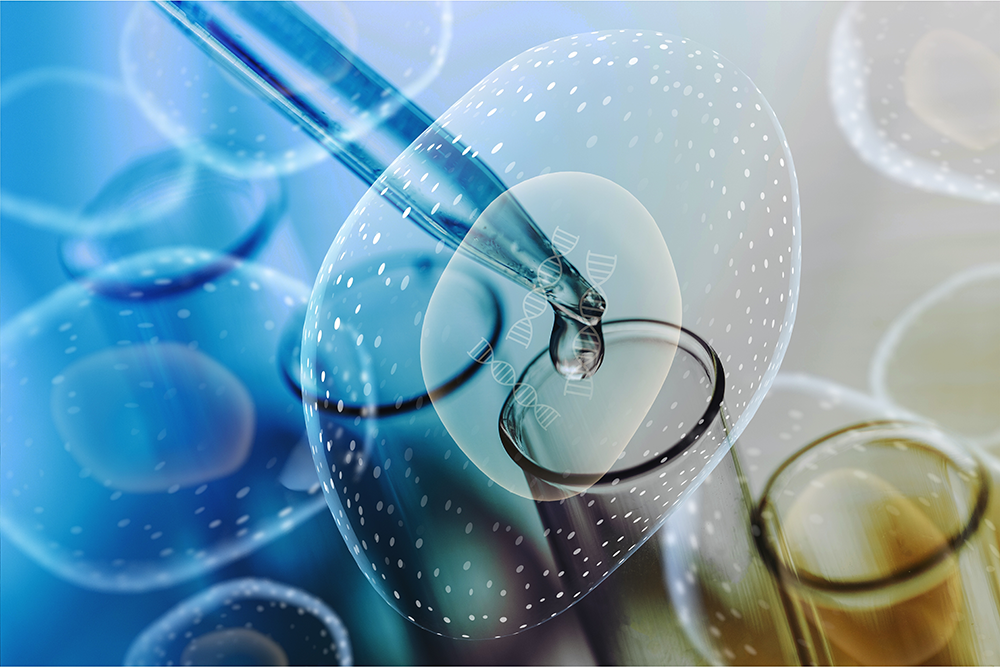Proteomics is ever-evolving in the clinical discovery of biomarkers and drugs. Now, tissue homogenization is being reinvented with the BeatBox® tissue homogenizer, enabling researchers to get better results from formalin-fixed, paraffin-embedded (FFPE) tissue samples in considerably less time.
Tissue biobanks are an invaluable resource in biomedical research. Formalin fixation and paraffin-embedding is the most common preservation method of human tissues for clinical research and hospitals routinely archive FFPE samples.1 Large tissue archives with associated clinical metadata are, therefore, readily available for clinical research.2 These represent a fundamental resource for studying the molecular mechanisms underlying diseases and the discovery of important biomarkers.1
Challenges with Protein Extraction
Protein extraction from complex tissues is essential for proteomic analysis in drug research and development. Although proteins in FFPE samples remain stable over decades, formalin-fixation makes proteins very difficult to extract effectively and efficiently. Tissue homogenization, to release proteins from cells and cell compartments, is one of the most critical and time-consuming steps of a proteomics workflow.3
Harsh conditions must be applied to biosamples to reverse formalin-induced crosslinks for protein extraction.4 Paraffin must also be removed from the sample as it interferes with liquid chromatography-mass spectroscopy downstream analysis. Traditionally, xylene is used in the deparaffinization step, however, xylene is toxic and highly flammable and may also negatively affect protein extraction and further quantitative analysis.5
Increasing the effectiveness, efficiency, and repeatability of tissue homogenization techniques is key to increasing protein recovery from FFPE samples while reducing the time constraints associated with the process.
PreOmics Solutions – the BeatBox Tissue Homogenizer
PreOmics’ BeatBox is a dedicated, semi-automated instrument for fast and straightforward tissue homogenization with minimal risk of cross-contamination and heat induction. This flexible throughput homogenizer enhances protein identifications and increases reproducibility, being seamlessly integrated into the iST sample preparation workflows. BeatBox simplifies, standardizes, and speeds up protein extraction from FFPE samples and allows for novel protocols.
Combining the BeatBox with iST considerably reduces the time associated with FFPE sample preparation. One major of this efficiency is the removal of a separated xylene-based deparaffinization step. An optimized iST peptide washing procedure is used instead to ensure the total removal of paraffin. When compared to traditional methods, this combined workflow saves up to 4 hours of time when preparing up to 96 samples, enabling high-throughput tissue homogenization and preparation in just one working day.
It provides more in-depth proteomic analysis, with an average of 14-43% increase in proteomic depth, depending on the tissue type. When compared to conventional sonication approaches, the BeatBox workflow shows much better performance in terms of proteome coverage. The workflow also exhibits remarkable repeatability, with coefficients of variation between quadruplicates being below 10% for all tissue types assessed, making it ideal for large numbers of samples.
The BeatBox workflow allows for the processing of FFPE tissues with similar efficiency to that of fresh frozen samples, with FFPE samples resulting in just an 8-14% reduction in the number of proteins identified by LC-MS. Data resulting from BeatBox homogenization of FFPE and frozen samples is highly comparable, with a 79-87% overlap in shared proteins, depending on the tissue type. The BeatBox workflow is, therefore, revolutionizing the analysis of FFPE tissue for proteomics, allowing for faster protein isolation without compromising the quality of results.
Conclusion
With the PreOmics BeatBox tissue homogenizer’s outstanding performance and efficient processing, high-throughput homogenization of FFPE samples is now possible. Both fast and simple to use, processing 1-96 samples in 10 minutes with just two clicks, the BeatBox tissue homogenizer is transforming proteomics.
Yielding greater proteome coverage compared to traditional approaches, with fewer manual and less toxic steps, the combined BeatBox and iST workflow is ideal for proteomic analysis of very large FFPE sample cohorts. This will reduce reliance on fresh frozen samples and allow the proteomic analysis of more and more FFPE samples to further advance clinical biomarkers and drug discovery.
To find out more about our BeatBox tissue homogenizer and how it can revolutionize your proteomics study, please visit our product website and contact us today.
References
1. Coscia, F., Doll, S., Bech, J.M., Schweizer, L., Mund, A., Lengyel, E., Lindebjerg, J., Madsen, G.I., Moreira, J.M. and Mann, M. 2020. A streamlined mass spectrometry–based proteomics workflow for large‐scale FFPE tissue analysis. The Journal of Pathology. 251(1), pp.100-112.
2. Piehowski, P.D., Petyuk, V.A., Sontag, R.L., Gritsenko, M.A., Weitz, K.K., Fillmore, T.L., Moon, J., Makhlouf, H., Chuaqui, R.F., Boja, E.S. and Rodriguez, H. 2018. Residual tissue repositories as a resource for population-based cancer proteomic studies. Clinical Proteomics. 15, pp.1-12.
3. Kwiatkowski, M., Wurlitzer, M., Krutilin, A., Kiani, P., Nimer, R., Omidi, M., Mannaa, A., Bussmann, T., Bartkowiak, K., Kruber, S. and Uschold, S. 2016. Homogenization of tissues via picosecond-infrared laser (PIRL) ablation: Giving a closer view on the in-vivo composition of protein species as compared to mechanical homogenization. Journal of Proteomics. 134, pp.193-202.
4. Obi, E.N., Tellock, D.A., Thomas, G.J. and Veenstra, T.D., 2023. Biomarker Analysis of Formalin-Fixed Paraffin-Embedded Clinical Tissues Using Proteomics. Biomolecules, 13(1), p.96.
5. Mitsa, G., Guo, Q., Goncalves, C., Preston, S.E., Lacasse, V., Aguilar-Mahecha, A., Benlimame, N., Basik, M., Spatz, A., Batist, G. and Miller Jr, W.H. 2022. A non-hazardous deparaffinization protocol enables quantitative proteomics of core needle biopsy-sized Formalin-Fixed and Paraffin-Embedded (FFPE) tissue specimens. International Journal of Molecular Sciences. 23(8), p.4443.



.webp)








